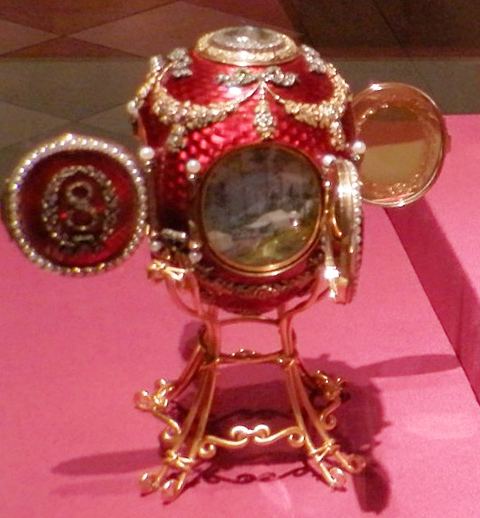Year delivered 1893 | ||
 | ||
Individual or institution Matilda Geddings Gray Foundation | ||
The Caucasus Egg is a jewelled enameled Easter egg made by Michael Perkhin under the supervision of the Russian jeweller Peter Carl Fabergé in 1893. The egg was made for Alexander III of Russia, who presented it to his wife, the Empress Maria Feodorovna.
Contents
Currently the egg is a long term installation at the Metropolitan Museum of Art in New York City, New York, as part of the Matilda Geddings Gray Foundation.
The Egg
The egg is made of yellow and varicoloured gold, silver, ruby enamel, rose-cut diamonds, portrait diamonds, platinum, ivory, pearls, rock crystal and watercolour on ivory.
It commemorates Abastumani in Caucasus where Grand Duke George spent most of his life after being diagnosed with tuberculosis. Miniatures were done and signed by Krijitski. The miniatures are revealed by opening four pearl-bordered doors around the egg. Each door bears a diamond-set numeral of the year, forming the year 1893. Behind the hinged cover at the top is a portrait of the Grand Duke in his naval uniform.
This is the first Imperial egg known to be dated. Ruby red enamel was used only one other time for the Imperial eggs as Alexei's hemophilia was a constant worry for the family.
Surprise
The surprise for this egg are the miniature paintings themselves.
